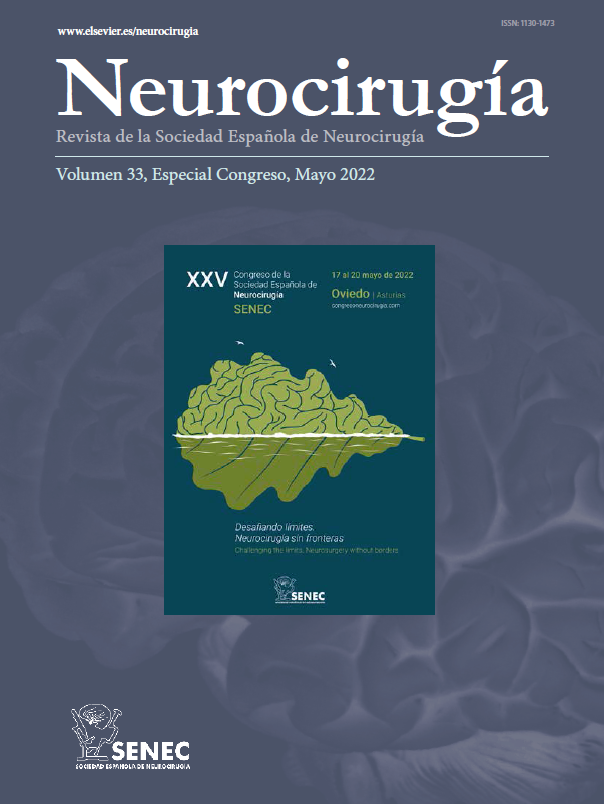P-198 - SUPRATENTORIAL EXTRA-AXIAL EPENDYMOMA MIMICKING A MENINGIOMA
Hospital Universitario Marqués de Valdecilla, Santander, Spain.
Introduction: Ependymomas account for 1.9% of all primary brain tumors. Their treatment consists of surgical excision and postoperative radiotherapy in anaplastic cases or when there is incomplete removal. They can arise throughout the whole neuroaxis. On the other hand, extra-axial ependymomas are extremely rare, and most of them are located in the posterior fossa. In fact, to the best of our knowledge, only 6 extra-axial supratentorial ependymomas have been previously reported. Interestingly, most of them were misdiagnosed as meningiomas as, both, meningiomas and ependymomas, can be isointense on T1- and T2-weighted images; however, meningiomas have homogenous contrast enhancement and often show the dural tail sign.
Case report: A 68 year-old-woman first presented with a non-traumatic acute subdural hematoma which required surgical treatment. At that moment, CT, angiography, and MRI did not reveal any underlying lesions and the patient was discharged after a 1-month recovery. Then, the 6-months control MRI showed a tumor lesion with hemorrhagic foci with solid and cystic-necrotic areas and intense contrast enhancement that was misdiagnosed as atypical meningioma. After surgical resection, final pathological examination showed perivascular pseudorosettes and immunohistochemical staining positive to S100, glial fibrillary acidic protein (GFAP), and vimentin, suggesting to be an extra-axial papillary ependymoma. A postoperative MRI showed complete removal of the lesion, and a radiologic follow-up was planned with no further treatment.
Discussion: Even though extra-axial infratentorial ependymoma is a rare entity, it should be included in the preoperative differential diagnosis of extra-axial lesions. Some radiological findings could help in the differential diagnosis such as homogeneous contrast enhancement and the dural tail sign in the case of meningiomas, which is not present in the case of ependymomas. In this case, the rapid growth of the lesion was also another hint suggesting other possibilities in the differential diagnosis.







